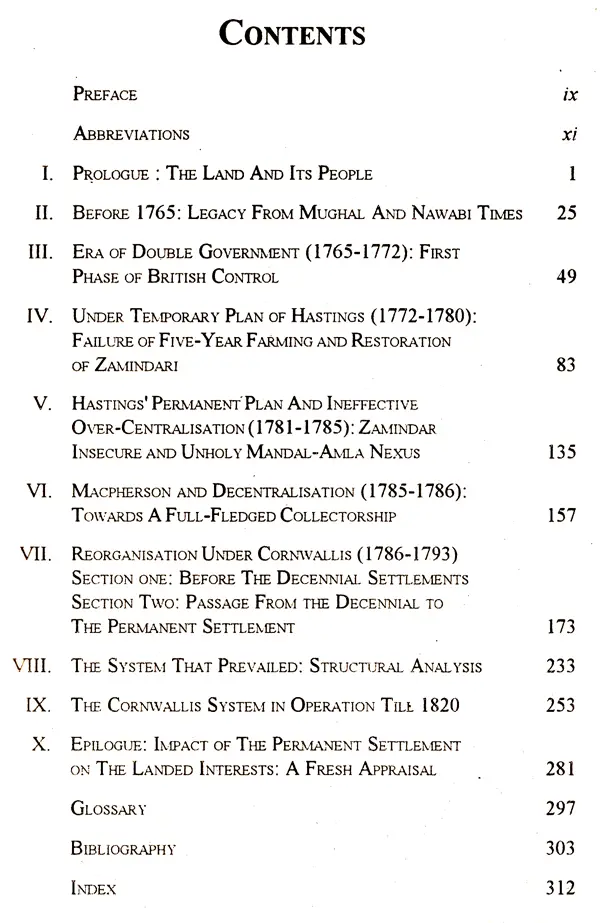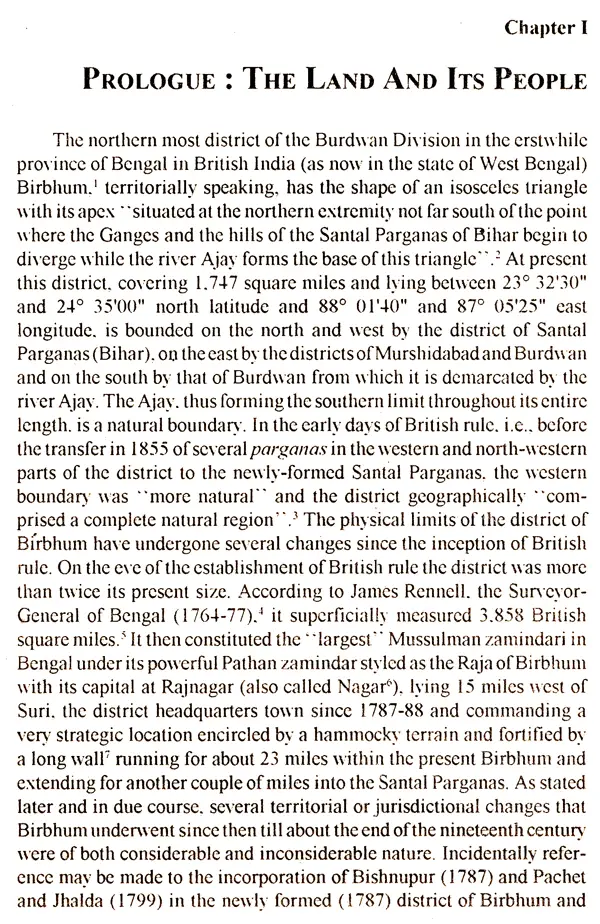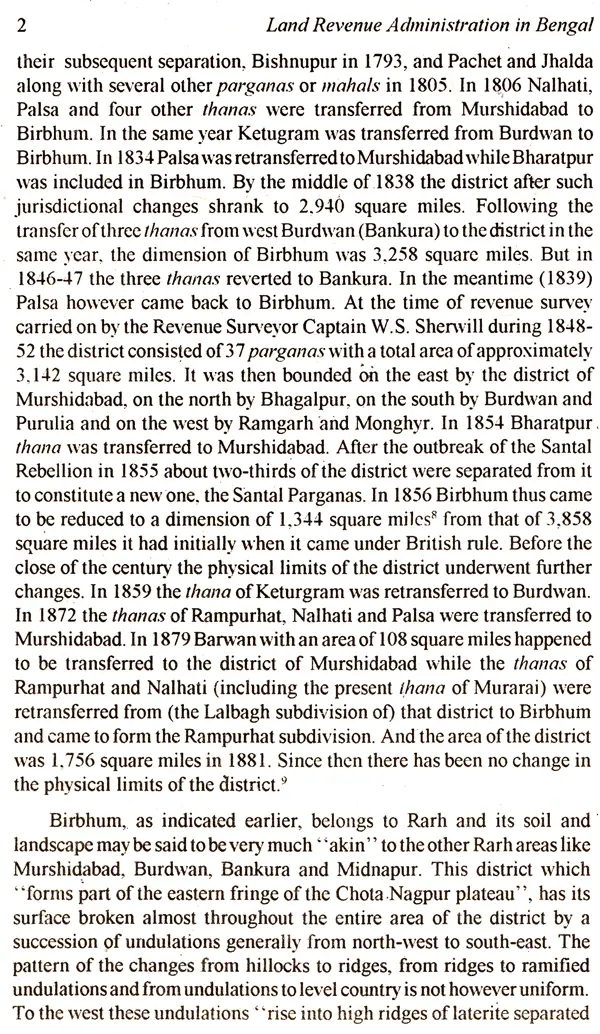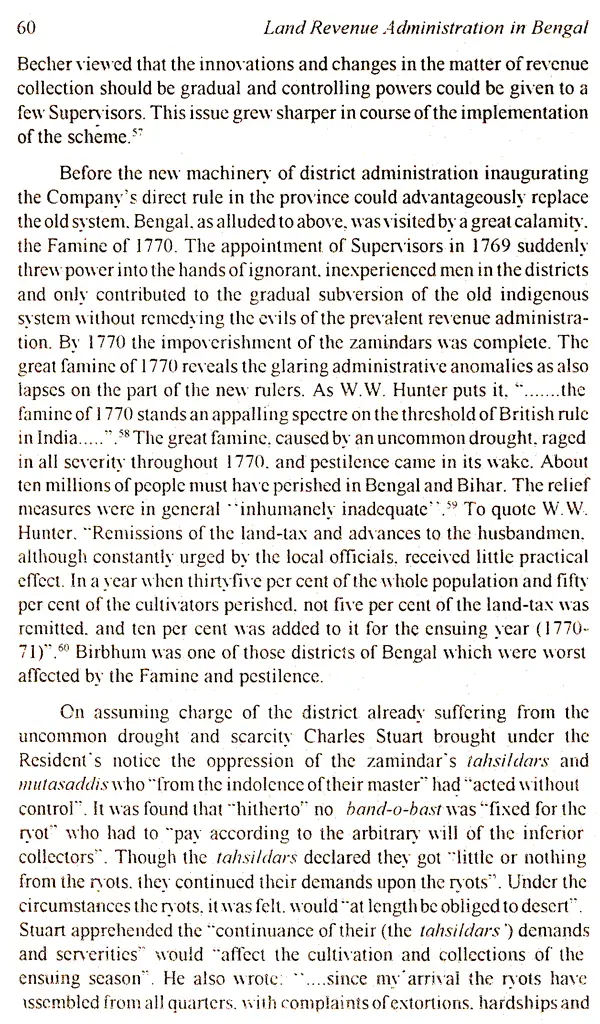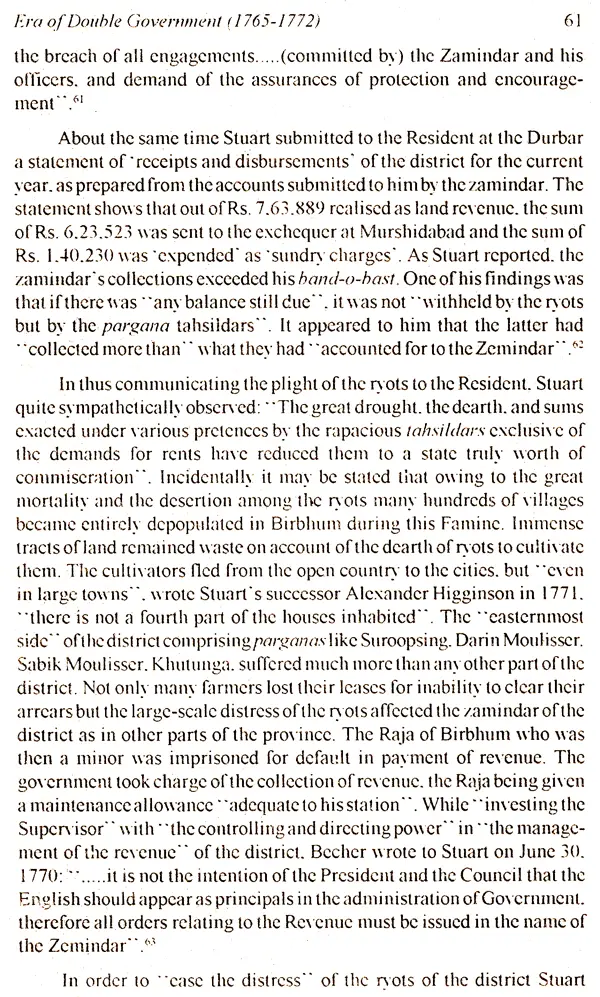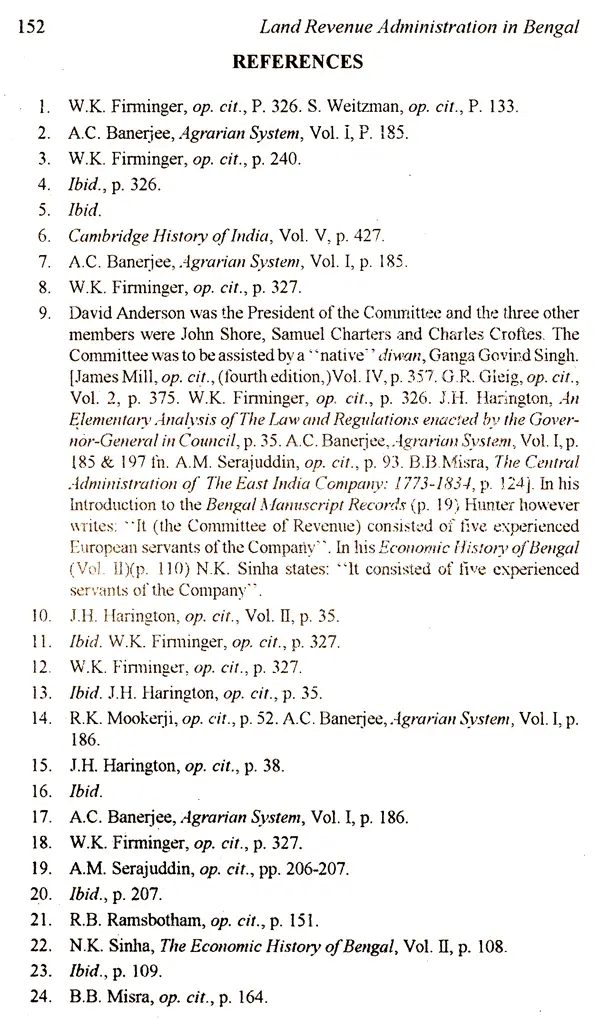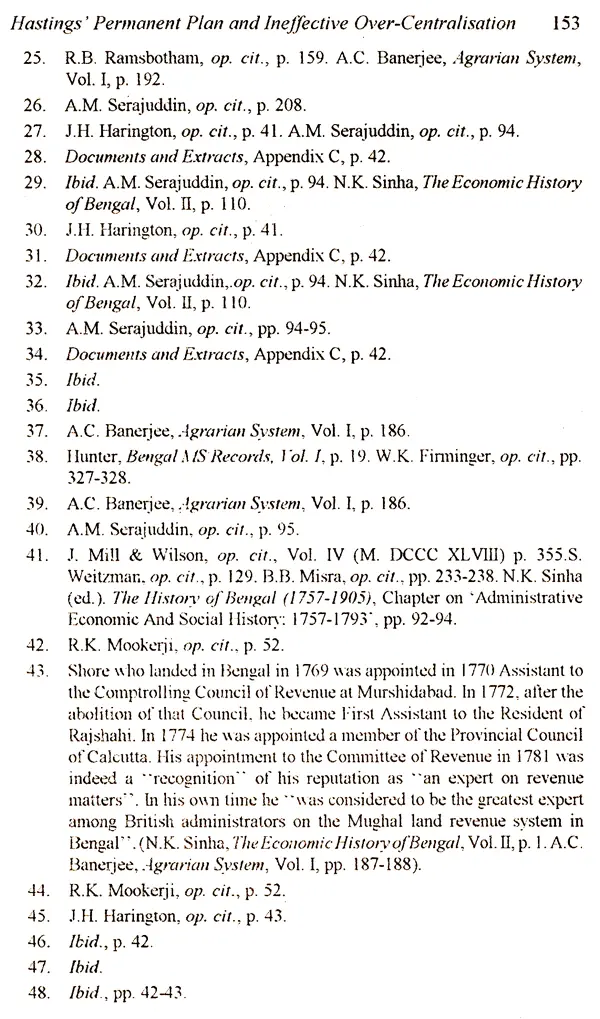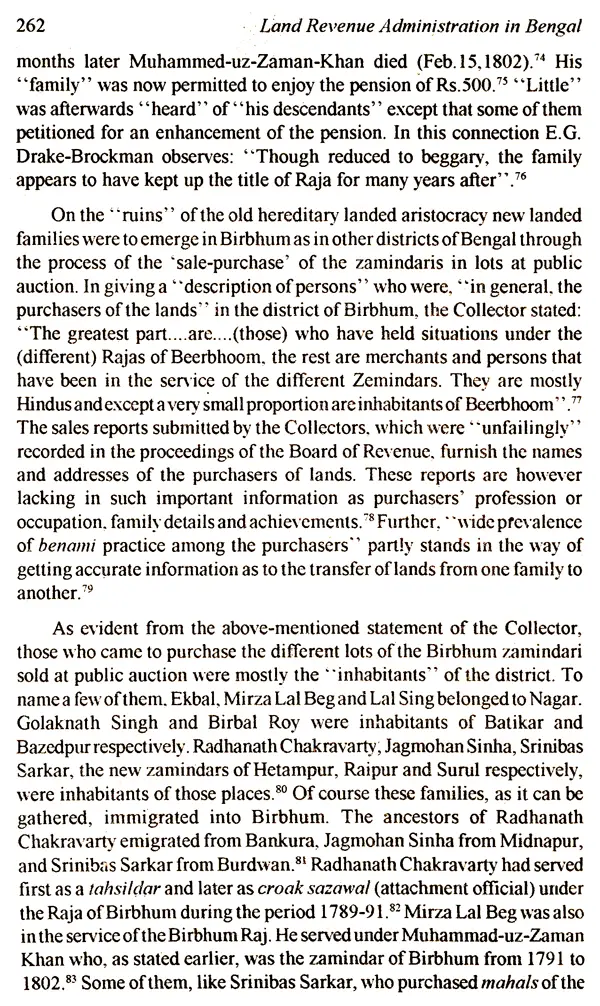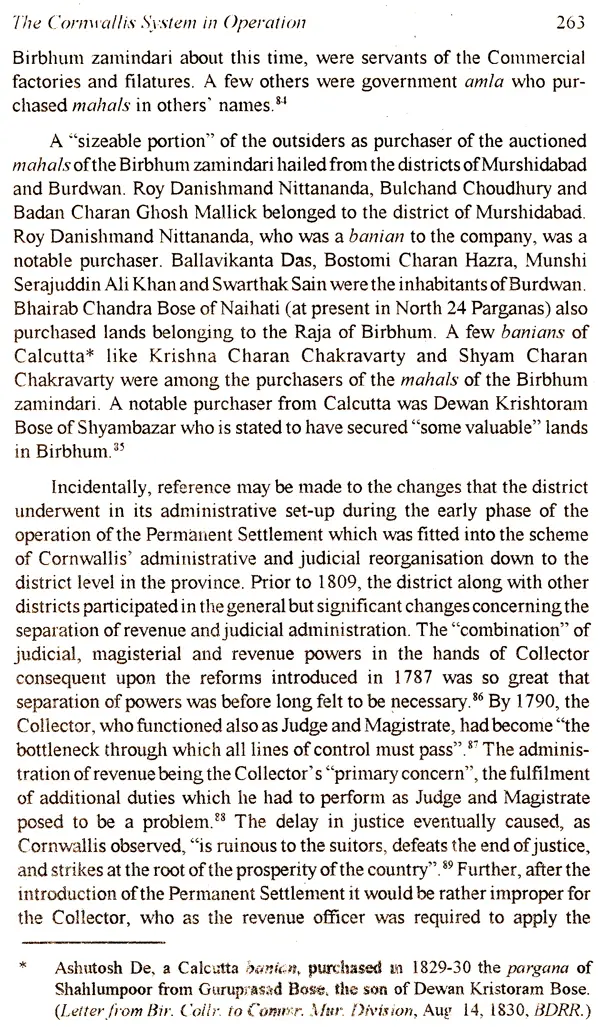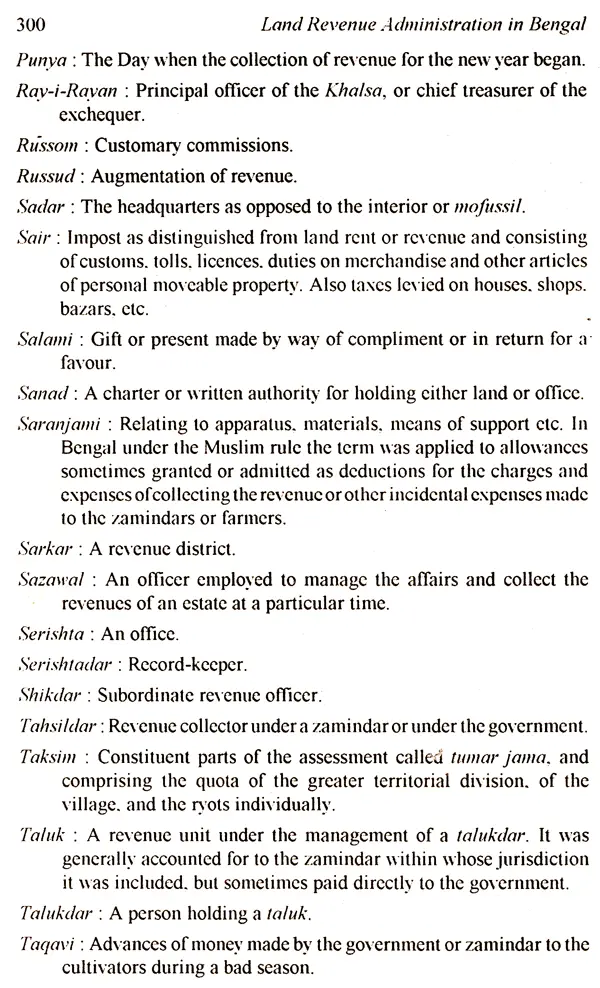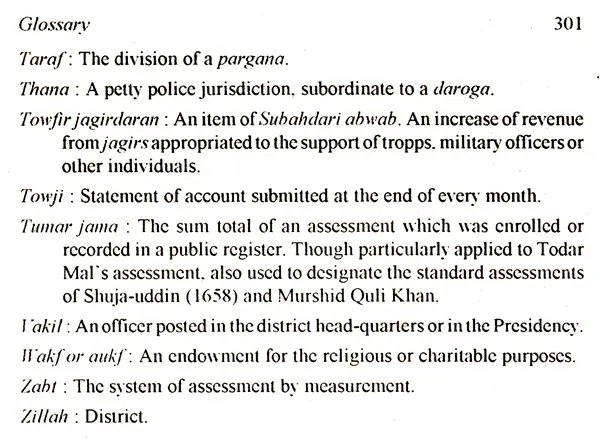
Land Revenue Administration in Bengal Under Early British Rule
Book Specification
| Item Code: | UAF788 |
| Author: | Manas Kumar Santra |
| Publisher: | Sharada Publishing House, Delhi |
| Language: | English |
| Edition: | 1994 |
| ISBN: | 8183616248 |
| Pages: | 316 |
| Cover: | HARDCOVER |
| Other Details | 9.00 X 6.00 inch |
| Weight | 500 gm |
Book Description
This is an attempt at a critical and comprehensive survey of the land revenue administration in Birbhum, a district of Bengal, in the early decades of British rule. The years 1765 and 1820 mark the chronological limits of this study. The first saw the East India Company's accession to the Diwani of the province (as also Bihar and Orissa), which Clive and his colleagues in the Select Committee (1756-74) came to describe as the Company having 'come into the place of the Country Government, by His Majesty's royal grant'. By thus acquiring a legal status in the administration of the entire province, the Company initially assumed the 'control' of the revenue administration of the province to the extent of superintend ing the collection of the revenues' and 'receiving the money from the Nabab's treasury to that of the Dewanny or the Company'. Thus in 1765, the 'Rajas' of Birbhum, ranking among 'principal zamindars' of the province and exercising territorial authority in their extensive zamindari since the close of the sixteenth century, passed under British control' which was obviously exercised in revenue matters in the initial stage. Needless to say, 'the chief source of the revenue of all Indian Govern ments', in the words of Lord William Bentinck. 'has consisted from time immemorial of a portion of the produce of land'. In the year 1820 the district of Birbhum which had for a time lost its distinct identity as a fullfleged collectorship was restored to that status. It has since remained so. These events thus provide convenient landmarks for the investigation of a process which of course could have, historically speaking no precise cut off points in time.
**Contents and Sample Pages**
